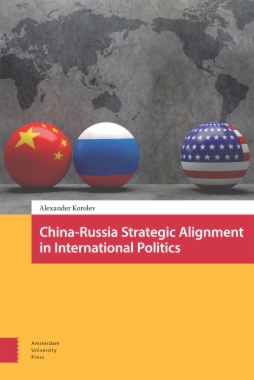Post-Cold War China-Russia strategic cooperation has displayed significant development and become an increasingly important factor in contemporary international politics. However, there has been no theory-grounded framework and corresponding measurements that would allow an accurate and systematic assessment of the level of China-Russia alignment and its progress over time. How closely aligned are China and Russia? How to define and measure strategic alignments between states? This book bridges area studies and International Relations literature to develop a set of objective criteria to measure and explain the development of strategic alignment in post-Cold War China-Russia relations. China-Russia Strategic Alignment in International Politics establishes that on a range of criteria, China-Russia alignment has been moving towards a full-fledged alliance, showing a consistent incremental upward trend. There are strong structural incentives for furthering the China-Russia alignment. The alignment framework developed in the book is applicable to other cases of interstate strategic cooperation and enables systematic comparisons of different strategic alignments.
- Cover
- Table of Contents
- List of Figures and Tables
- Figure 2.1 The stages, criteria, and causes of alignment formation
- Figure 3.1 Development of China–Russia military cooperation since 1991
- Figure 4.1 Commonality of China’s interests with Russia and the US (1991-2020)
- Table 5.1 China–Russia trade (1992-2019)
- Table 5.2 Non-energy share of China–Russia trade in 2001-2019 (%)
- Table 5.3 Veto records in UN Security Council (1991-2020)
- Table 5.4 China–Russia joint vetoes in the UNSC since 1991
- Table 6.1 India’s major regular military exercises with the United States andRussia
- Table 6.2 Comparison of China–Russia and US–India alignments
- Acknowledgments
- 1. Introduction
- The Elusive Nature of China–Russia Relations and the Need for Theory
- Studies of China–Russia relations: in search of the “right” label
- Existing definitions of alignments: conceptual ambiguity
- China–Russia relations and alignments studies – towards analytical synergy
- The book: structure and the logic of analysis
- References
- 2. The Ordinal Model of Strategic Alignment
- Treaty alliances and informal alignments: the analytical implications
- The ordinal index of strategic alignment
- Explaining the trend: the three balances as incentives for alignment formation
- Robustness check: economic and diplomatic cooperation
- References
- 3. Military Cooperation: Approaching Alliance
- China–Russia cooperation treaty
- The early stage: confidence building measures and regular consultations
- 1 Confidence building measures
- 2 Regular consultations
- Moderate cooperation: military-technical cooperation and regular military exercises
- 3 Military-technical cooperation
- 4 Regular military exercises
- Advanced cooperation: the growing interoperability of military forces
- Conclusion
- References
- 4. Alignment Incentives: The Three Balances
- Balance of power: the shift in the distribution of capabilities and its implications
- Balance of threat: convergence of China and Russia’s perception of external threats
- Convergence of interests and implications for China–Russia alignment
- Conclusion
- References
- 5. Robustness Check: Economy and Diplomacy
- Economic cooperation: trade, unequal interdependence, and new initiatives
- The formation of “unfavorable complementarity” in China–Russia economic relations
- Attempts to reverse the trend
- Diplomatic cooperation: a reflection of geopolitical interests
- Conclusion
- References
- 6. Comparative Mapping: US–India and China–Russia Alignments
- US–India cooperation from the strategic alignment perspective
- Confidence building measures and US–India alignment
- Mechanisms for regular consultations in US–India strategic cooperation
- Military-Technical Cooperation (MTC)
- Regular joint military exercises in US–India relations
- Advanced cooperation and interoperability of US and Indian military forces
- Explaining US–India strategic cooperation: power, threats, and interest
- Robustness check
- Conclusion
- References
- 7. Conclusion
- Empirical Findings and Theoretical Implications
- China–Russia relations: an ever-consolidating strategic alignment?
- The alignment framework and the study of interstate strategic cooperation
- References
- Index

